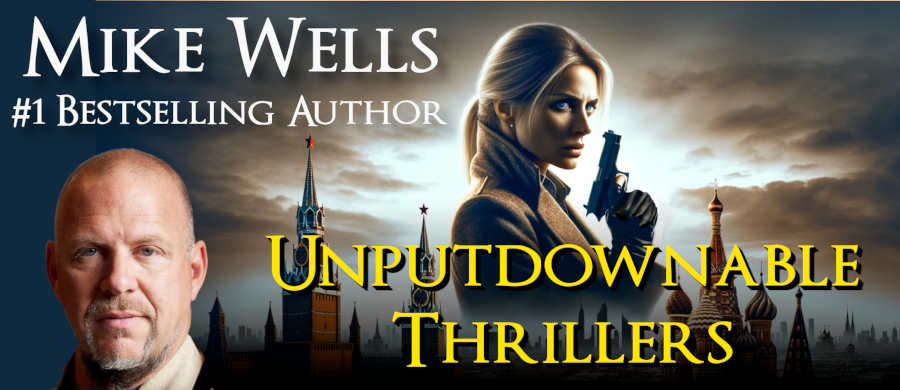Books printed on paper have been signed by authors ever since the invention of the printing press. As readers, we love having our books autographed by our favorite authors. It makes us feel a personal connection to the writers that have given us so much entertainment and enjoyment, perhaps even helped us see the world a little differently. I know that I cherish my signed hardback copy of Insomnia, which Stephen King signed for me when he came to Nashville on a book tour.
As authors, we also enjoy signing books (although it can wear out your hand if you do a few thousand in a row!) This gives us a chance to connect face-to-face with readers, hear your comments in person, and allows us get to know you a little bit. Also, book signings sell books, which help provide the income to keep writing.
Enter the Ebook
Ebooks certainly have loads of advantages over paper books, but they also have some disadvantages, and book signing is one of them.
How the heck does an author autograph an ebook?
One brute-force solution is simply to have the author sign the back of your Kindle or whatever ereader you own, if you are lucky enough to meet him/her in person. Many people have done this, collecting signatures on their devices the way some sports fans collects signatures of famous players on a football (see photo).
The problem with this approach, of course, is that there’s only a limited amount of space on the back of an ereader, and the whole notion of it is a bit messy. It’s just not the same as having a “real”, author-signed book.
There are a number of entrepreneurs working on solutions to the problem, most notably Autography, a company in Florida. This firm is offering several options, one being that the reader would request an autographed copy of the book through the retailer or publisher, the author would “sign” a blank page in the copy using a tablet computer and a stylus, and then the signed copy would be sent to the reader’s device. Another approach includes gadgetry to allow authors to sign ebooks while in brick-and-mortar bookstores, creating a photo of the author and fan together, and then inserting this into the fan’s ebook copy with some stylus-scribbled words from the author.
Whether or not any of these solutions will take hold in a big way is questionable, at least to me. It’s hard to imagine some of these approaches creating the same sense of reader/author connection as physical, author-autographed books. I know that in my case, the main reason I cherish my signed copy of Insomnia isn’t so much Stephen King’s hastily-signed signature or the value it might have someday, it’s the memory it conjures up. I had a chance to meet the man in person, shake hands with him, and tell him how much I liked his work. Most of the solutions I’m seeing, save the fancy bookstore-based setup I mentioned above, don’t result in the same effect.
But I have no doubt that with the rapid advance of technology and the number of brilliant entrepreneurs there are in the world, creative solutions will continue to emerge.
In the meantime, I’ll be happy to sign your Kindle!


Hi! I just wanted you to know that I shared this post. I really love the idea of getting my eBooks autographed! The only one I have, We Don't Plummet Out of the Sky Anymore by M. David Blake, I got almost exactly a year ago. He did it by creating a special page that he added to my edition. I am sure that would not be feasible on a large scale, but it sure was cool then!
ReplyDeleteThanks for sharing the post, and also for your comment. If you run across any kind of app or firm making an app for authors to sign ebooks, I'd like to know about it.
ReplyDelete"...an app for authors to sign ebooks..." If ppl can sign FedEx with electronic pens on a screen why not an app to do the same?
ReplyDeleteGood point!
ReplyDeleteSqueak, it is always a thrill to see that people are still talking about the eBook Signing Event! I'm glad you enjoyed the story, and one of these days I should probably do another string of e-signings. It was great fun, and the word-of-mouth publicity was phenomenal.
ReplyDeleteMike, if you are interested in seeing what I did, and how, the original discussion thread is still up at MobileRead.com:
http://www.mobileread.com/forums/showthread.php?t=90082
Terrific post, Mike. You are right. I feel the same way about my signed Nora Roberts book.
ReplyDeleteAnother thing, wouldn't e-signing make it really easy to forge an writer's signature? Since everyone thinks authors have deep pockets, that really scares me.
Probably you're right, copying digital signatures could be pretty easy. But if individualized ("To John Jones, best wishes" with date, etc.) they might not be.
ReplyDeleteJust an update--the problem of signing ebooks is solved, at least partially. I'm now on Kindlegraph, which allows readers to request that I sign the cover of any of my books (free of charge). After I do this, a PDF of the signed book cover is automatically sent to the reader's Kindle via Amazon. Many readers are collecting these now on their Kindles from their favorite authors. Check it out here: http://kindlegraph.com/authors/MikeWellsAuthor
ReplyDeletethnx
ReplyDeleteIts not more than a month when I came to know about this idea that ebooks can also have autographs of authors and it really amazed me.But your blog provided me details .Thanks
ReplyDeletedigital signature FAQ
Thank you very much for this post. Your posts are the useful thing which we all are looking for that kind information.
ReplyDeletedigital marketing services in india